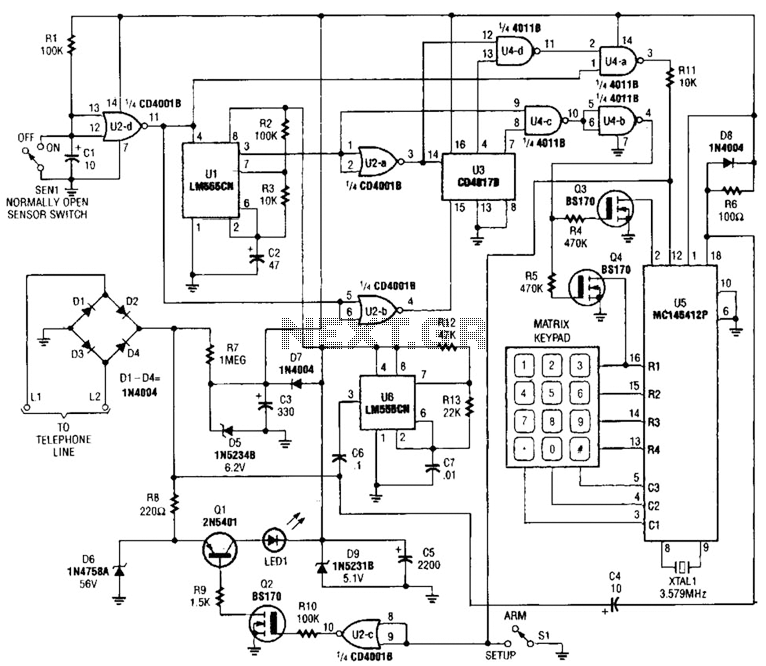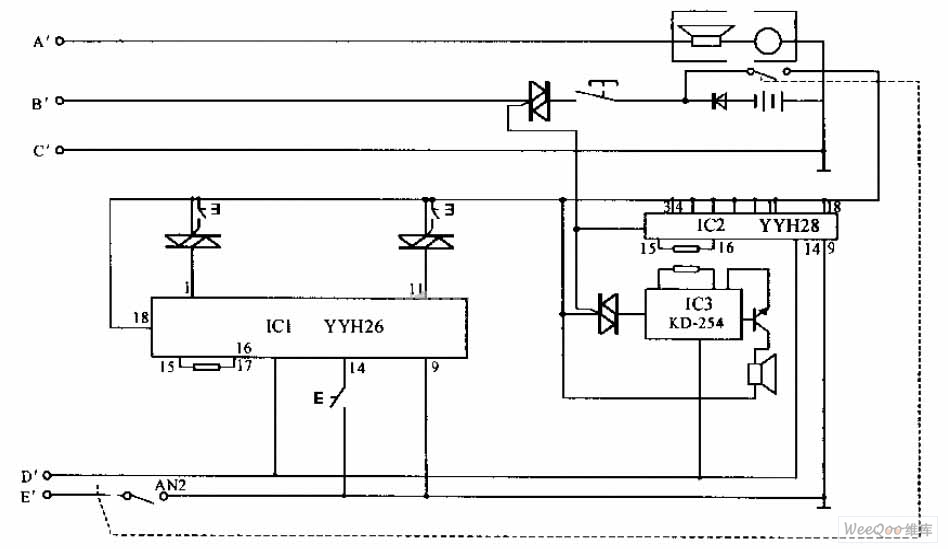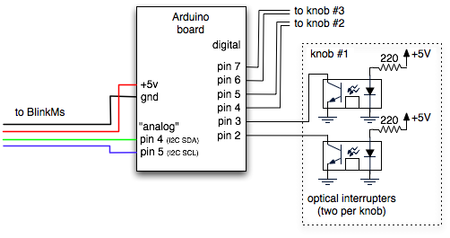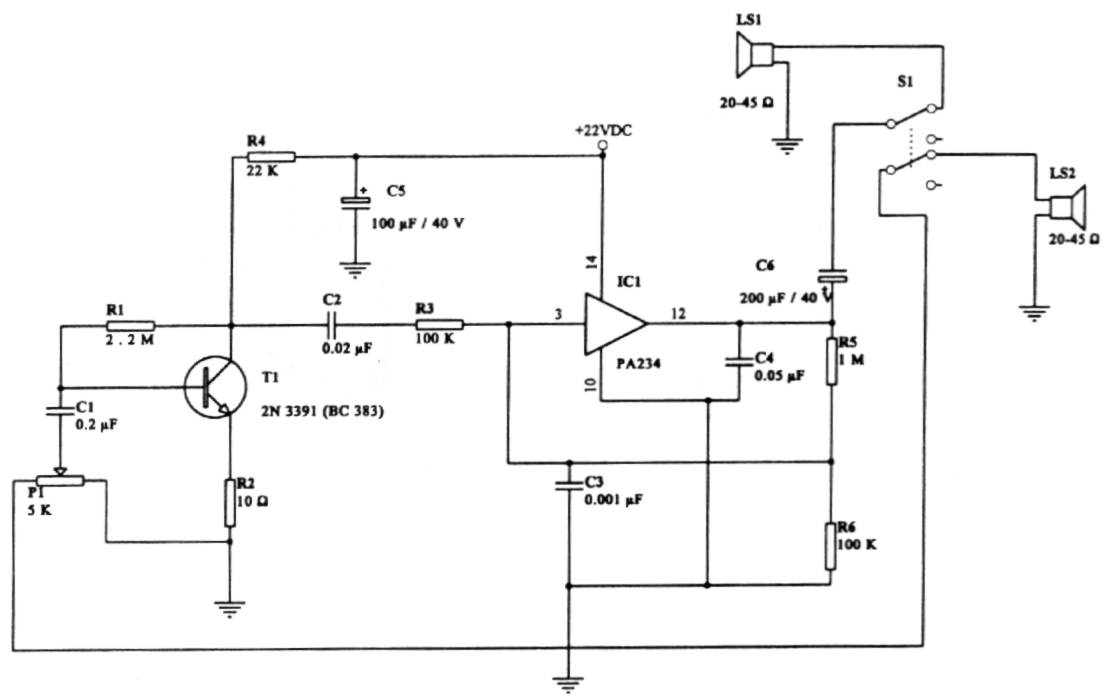
The Link Telephone Intercom
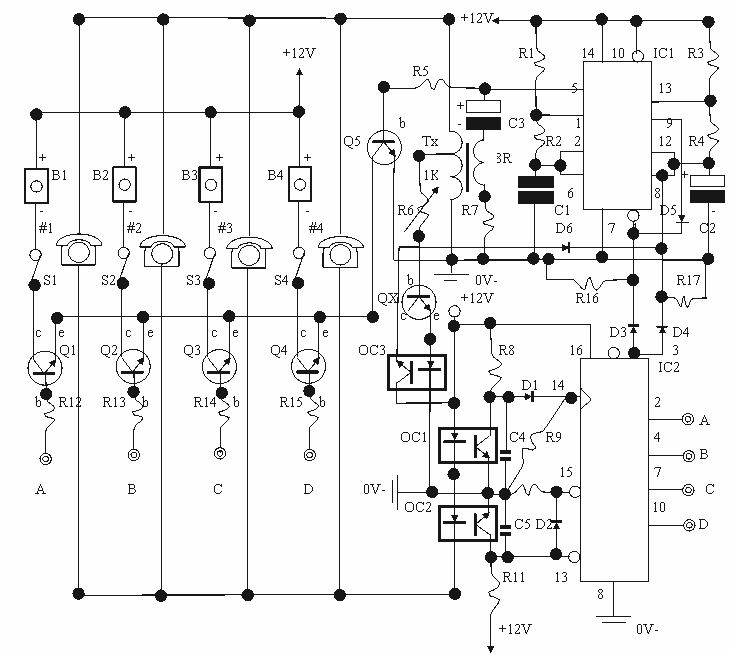
It uses old pulse dial handsets and replaces the AC bell set with a 9 volt DC buzzer. The whole circuit runs from a 12 volt regulated DC supply and is suitable for short term battery operation (eg: Gel Cell). The Link is designed to enable one call at a time within a small area (about 100 meters from the black box is about the max per handset) and is not suitable for connection to the PSTN (public network) as the voltages and currents used by the PSTN are higher, and will damage the simpler 12 volt circuitry, that employs CMOS ICs etc. The Link will run quite happily off a 12 volt regulated DC supply of only 200mA or so, and this can be a simple affair, such as a DC plug pack, wired to a 7812 regulator chip and appropriate filter caps on the output. Add some leds if you want!
The circuit described utilizes vintage pulse dial handsets, which function by generating electrical pulses corresponding to the dialed number. In this design, the traditional AC bell set has been replaced with a 9-volt DC buzzer, which provides an audible alert when a call is initiated. The entire system operates on a 12-volt regulated DC power supply, making it suitable for temporary battery applications, such as with gel cell batteries.
The operational range of the system is approximately 100 meters from the central unit, referred to as the "black box," which houses the control circuitry. It is important to note that this system is not designed for connection to the Public Switched Telephone Network (PSTN) due to the differing voltage and current requirements that could potentially damage the simpler 12-volt circuitry. The circuit employs CMOS integrated circuits, which are sensitive to over-voltage and over-current conditions.
Power consumption for the system is relatively low, with the circuit drawing only about 200 mA from the 12-volt supply. This makes it feasible to use a straightforward DC plug pack as the power source. The design can incorporate a 7812 voltage regulator to maintain a stable output voltage, along with appropriate filter capacitors to ensure smooth operation and reduce voltage ripple.
Additionally, for visual feedback or aesthetic enhancement, light-emitting diodes (LEDs) can be integrated into the circuit. These LEDs can serve various functions, such as indicating when the system is powered on or signaling an incoming call, thereby enhancing user interaction with the device. The overall design is compact and efficient, making it suitable for localized communication applications.It uses old pulse dial handsets and replaces the AC bell set with a 9 volt DC buzzer. The whole circuit runs from a 12 volt regulated DC supply and is suitable for short term battery operation (eg: Gel Cell). The Link is designed to enable one call at a time within a small area (about 100 meters from the black box is about the max per handset) and is not suitable for connection to the PSTN (public network) as the voltages and currents used by the PSTN are higher, and will damage the simpler 12 volt circuitry, that employs CMOS ICs etc.
The Link will run quite happily off a 12 volt regulated DC supply of only 200mA or so, and this can be a simple affair, such as a DC plug pack, wired to a 7812 regulator chip and appropriate filter caps on the output. Add some leds if you want! 🔗 External reference
The circuit described utilizes vintage pulse dial handsets, which function by generating electrical pulses corresponding to the dialed number. In this design, the traditional AC bell set has been replaced with a 9-volt DC buzzer, which provides an audible alert when a call is initiated. The entire system operates on a 12-volt regulated DC power supply, making it suitable for temporary battery applications, such as with gel cell batteries.
The operational range of the system is approximately 100 meters from the central unit, referred to as the "black box," which houses the control circuitry. It is important to note that this system is not designed for connection to the Public Switched Telephone Network (PSTN) due to the differing voltage and current requirements that could potentially damage the simpler 12-volt circuitry. The circuit employs CMOS integrated circuits, which are sensitive to over-voltage and over-current conditions.
Power consumption for the system is relatively low, with the circuit drawing only about 200 mA from the 12-volt supply. This makes it feasible to use a straightforward DC plug pack as the power source. The design can incorporate a 7812 voltage regulator to maintain a stable output voltage, along with appropriate filter capacitors to ensure smooth operation and reduce voltage ripple.
Additionally, for visual feedback or aesthetic enhancement, light-emitting diodes (LEDs) can be integrated into the circuit. These LEDs can serve various functions, such as indicating when the system is powered on or signaling an incoming call, thereby enhancing user interaction with the device. The overall design is compact and efficient, making it suitable for localized communication applications.It uses old pulse dial handsets and replaces the AC bell set with a 9 volt DC buzzer. The whole circuit runs from a 12 volt regulated DC supply and is suitable for short term battery operation (eg: Gel Cell). The Link is designed to enable one call at a time within a small area (about 100 meters from the black box is about the max per handset) and is not suitable for connection to the PSTN (public network) as the voltages and currents used by the PSTN are higher, and will damage the simpler 12 volt circuitry, that employs CMOS ICs etc.
The Link will run quite happily off a 12 volt regulated DC supply of only 200mA or so, and this can be a simple affair, such as a DC plug pack, wired to a 7812 regulator chip and appropriate filter caps on the output. Add some leds if you want! 🔗 External reference
